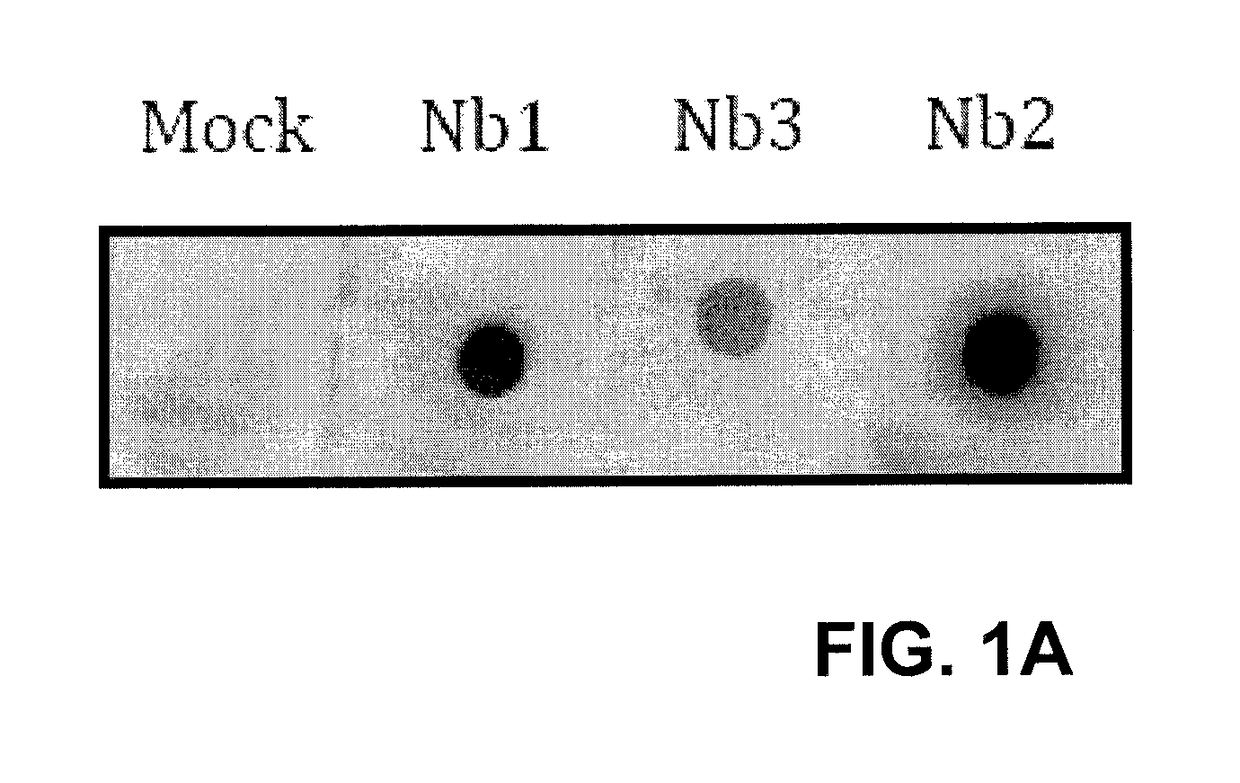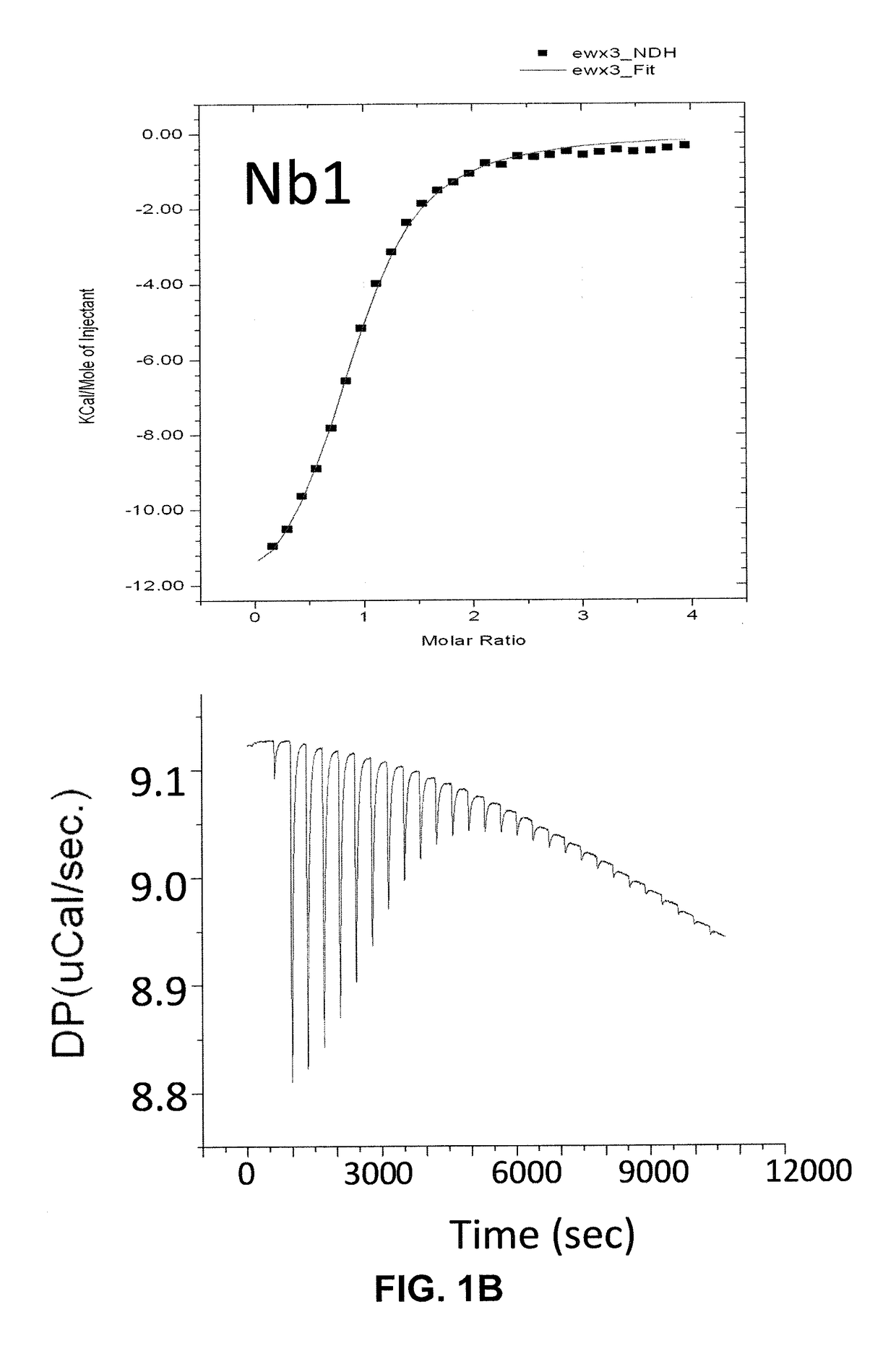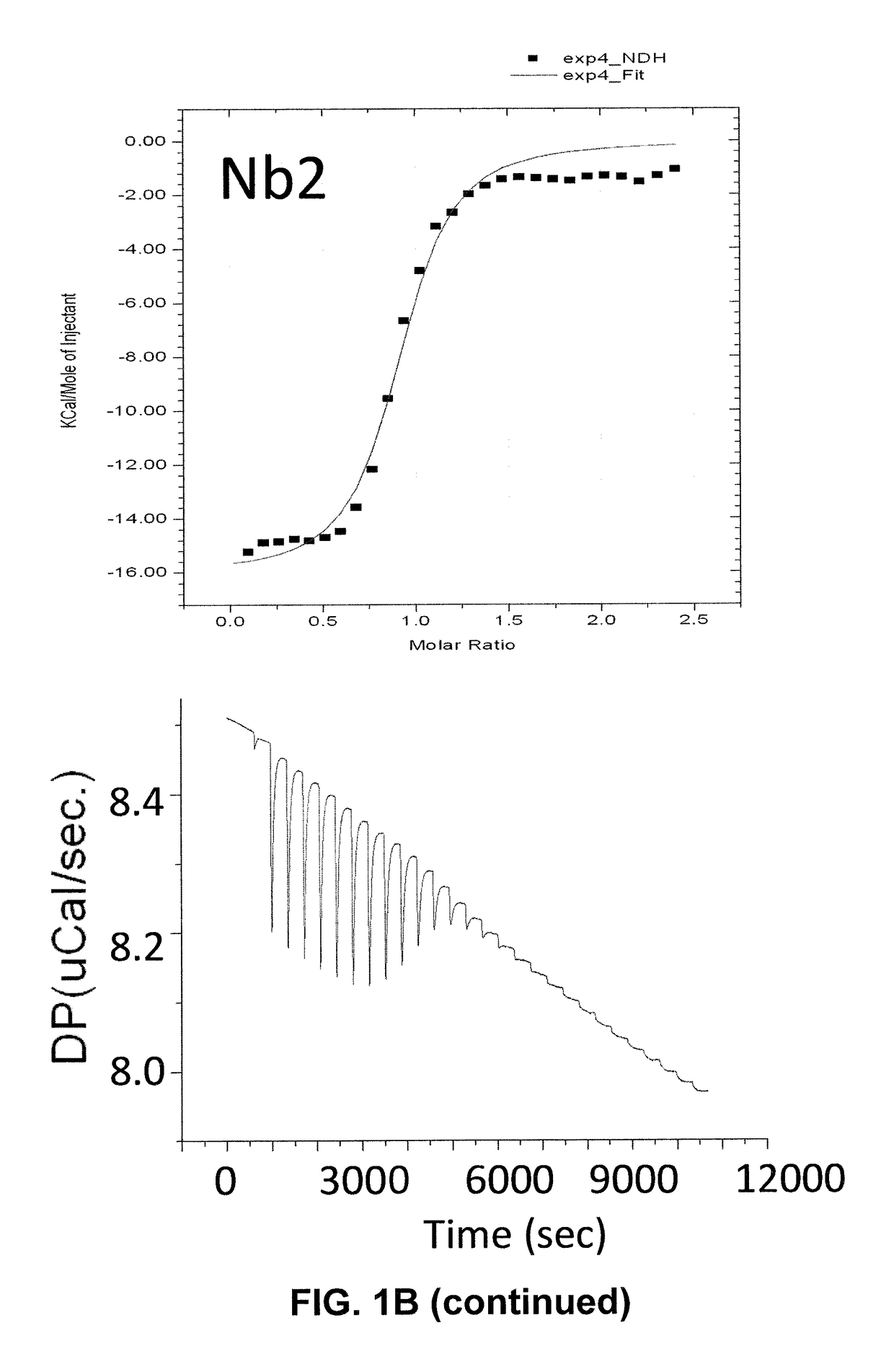Single domain antibodies against SOD1 and their use in medicine
a single-domain antibody and sod1 technology, applied in the field of single-domain antibodies, can solve the problems of progressive mn loss, multi-factorial or incompletely understood newly acquired toxic function, and no effective treatment of neurodegenerative diseases
- Summary
- Abstract
- Description
- Claims
- Application Information
AI Technical Summary
Benefits of technology
Problems solved by technology
Method used
Image
Examples
example 1
Generation and Characterization of Single-Domain Antibodies Against SOD1
SOD1 Nanobodies (Nucleic Acids) have High Affinity for SOD1 In Vitro
[0090]The binding of nanobodies to immobilized recombinant SOD1 was verified by Western Dot Blot (FIG. 1A). Strong binding was detected with Nb1 and Nb2, but not the Nb3 and Nb4, suggesting that the recombinant Nb3 was not fully active. To further characterize the binding properties of the nanobodies, Isothermal Titration calorimetry (ITC) was performed to determine affinities (Kd), enthalpies (ΔH) and entropies (ΔS) of binding.18 Solution containing SOD1 was titrated with nanobodies in an isothermic chamber at 25° C., and the heat required to dissipate the energy of binding was recorded for each titration (FIG. 1B, lower panel). These data were fitted into one-site binding model to calculate affinity of binding Kd, ΔH and ΔS (FIG. 1B, upper panel). Both Nb1 and Nb2 were found to bind SOD1 with near-micromolar Kd: ˜1 μM and ˜0.2 μM for Nb2 and N...
example 2
SOD1 Nanobody (Nucleic Acids) Abolishes Mutant SOD1 Aggregate Formation in NSC34 Cells
Transfection of the SOD1 Nanobody Abolishes Mutant SOD1 Aggregate Formation in NSC-34 Cells
[0095]The effect of the expression of the HA-tagged anti-SOD1 nanobody on the formation of mutant SOD1-induced aggregates in motor neuronal NSC-34 cells was investigated. Transfection of NSC-34 cells with mutant (AV4 and G93A) but not WT SOD1-eGFP induced the formation of cytoplasmic mutant SOD1 aggregates, as has been described before (FIGS. 3A, 3B and 3C). First, the nanobody expression after transfection was tested by immunocitochemistry and Western blot (FIGS. 3D and 3E). The effect of nanobody expression on aggregate formation by co-transfecting NSC-34 cells with SOD1-eGFP and either the SOD1 nanobody or control nanobody was assessed (FIGS. 4A-4C). The number of NSC-34 cells containing aggregates was quantified 24, 48 and 72 hours after transfection (FIGS. 4A and 4B). Expression of the anti-SOD1 nanobody...
example 3
The SOD1 Nanobody (Nucleic Acids) Clears SOD1 and Rescues the Axonopathy in Zebrafish In Vivo
The SOD1 Nanobody Clears SOD1 and Rescues the Axonopathy in Zebrafish In Vivo
[0098]Expression of human mutant SOD1 or mutant TDP-43 induces axon outgrowth defects and aberrant branching in zebrafish.22, 23 This model has been used for identification of disease modifiers in animal models and humans.24 In order to investigate the effect of the anti-SOD1 nanobody on the mutant SOD1-induced axonopathy, zebrafish embryos were injected with mutant SOD1A4V mRNA with anti-SOD1 nanobody or control nanobody mRNA. First, nanobody expression was checked after nanobody mRNA injection in zebrafish by Western blot (FIG. 6A).
[0099]SOD1 immunoblot analysis revealed that co-expression of the anti-SOD1 nanobody decreased SOD1 levels in a dose-dependent manner (FIG. 6B), with 25 ng / μl achieving a significantly decreased SOD1 level (p=0.022). Injection of the control nanobody had no effect on SOD1 levels.
[0100]T...
PUM
| Property | Measurement | Unit |
|---|---|---|
| molecular weight | aaaaa | aaaaa |
| molecular weight | aaaaa | aaaaa |
| concentration | aaaaa | aaaaa |
Abstract
Description
Claims
Application Information
 Login to View More
Login to View More - R&D
- Intellectual Property
- Life Sciences
- Materials
- Tech Scout
- Unparalleled Data Quality
- Higher Quality Content
- 60% Fewer Hallucinations
Browse by: Latest US Patents, China's latest patents, Technical Efficacy Thesaurus, Application Domain, Technology Topic, Popular Technical Reports.
© 2025 PatSnap. All rights reserved.Legal|Privacy policy|Modern Slavery Act Transparency Statement|Sitemap|About US| Contact US: help@patsnap.com



